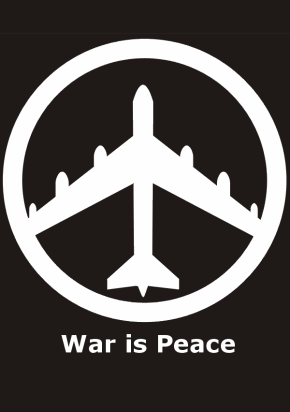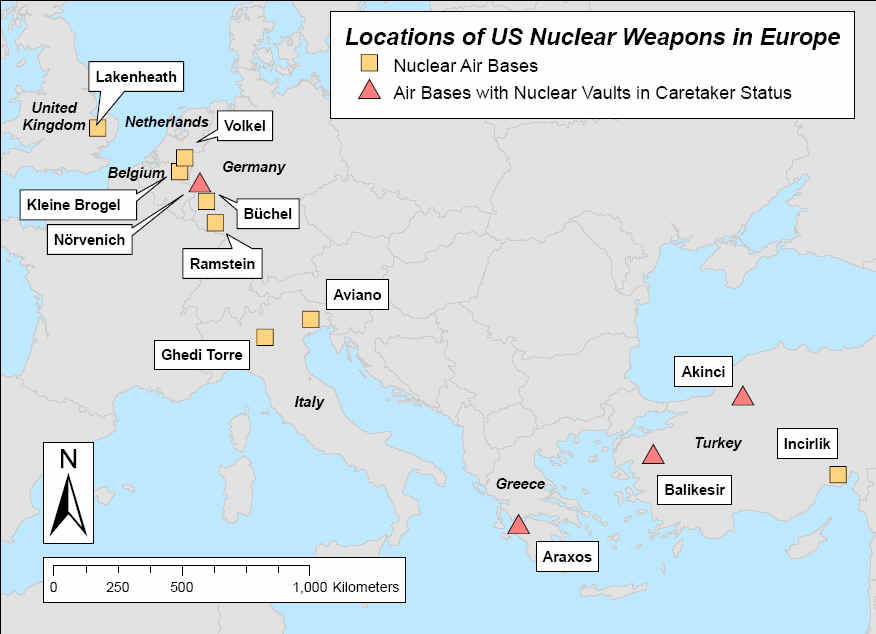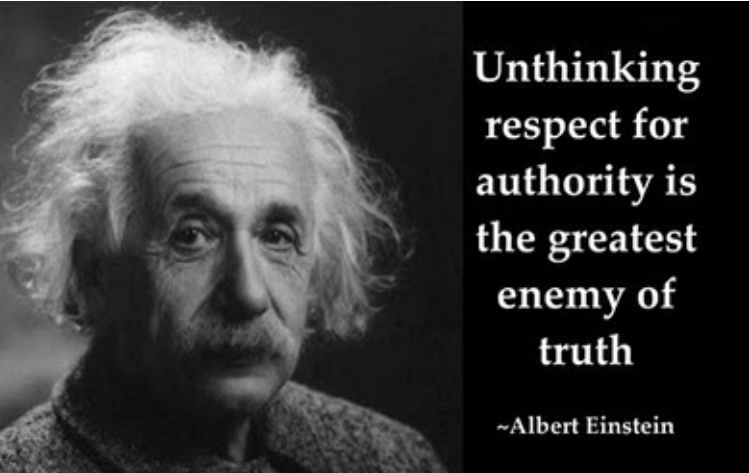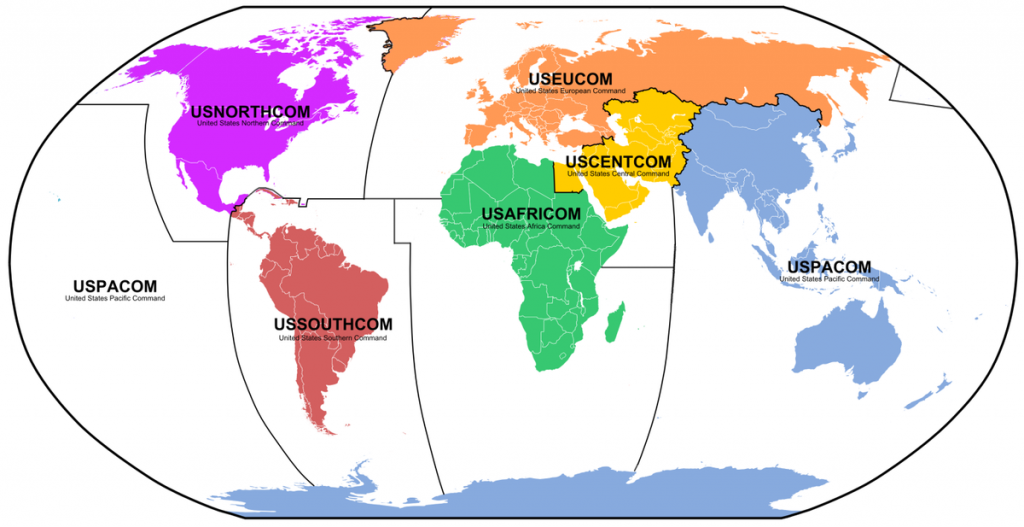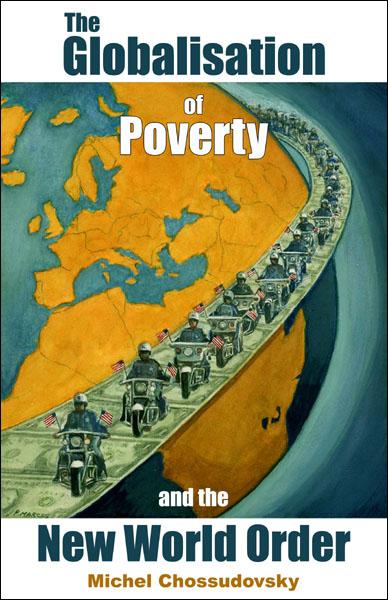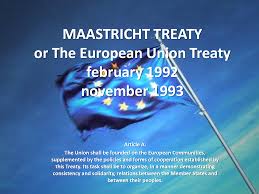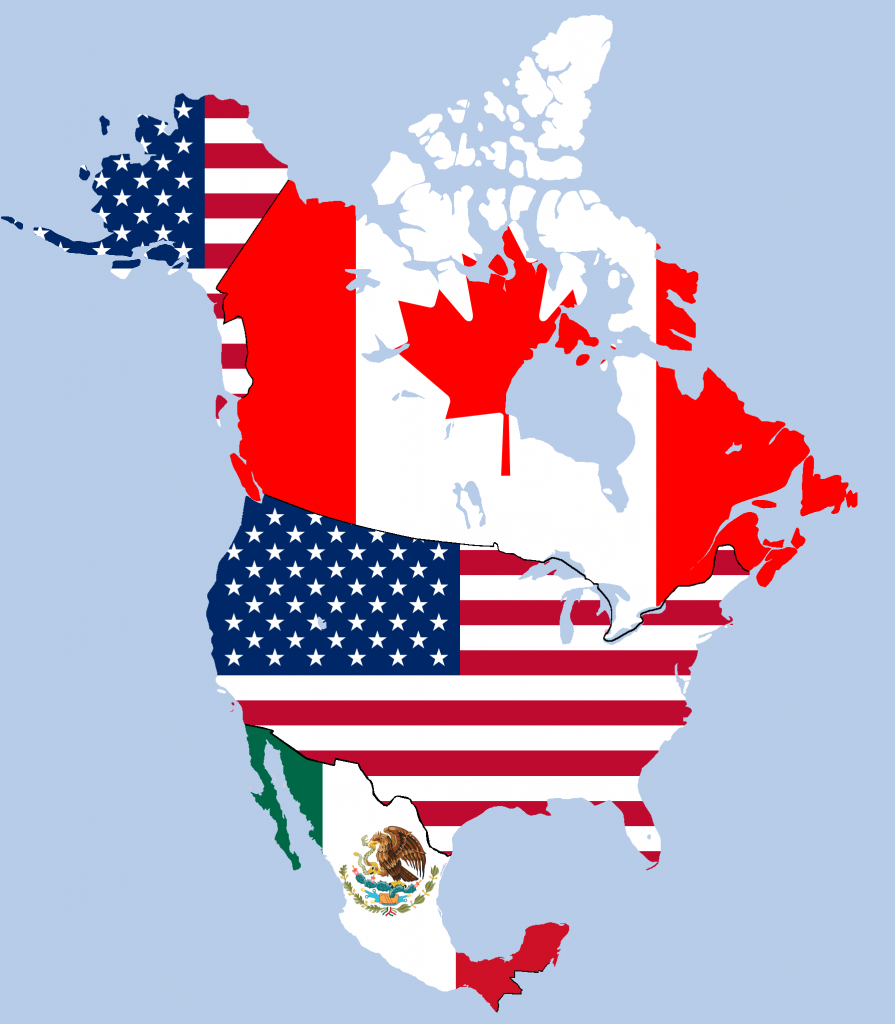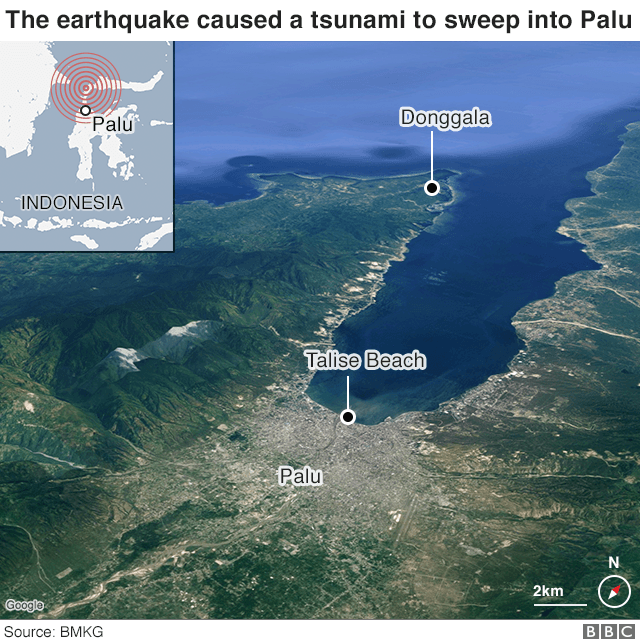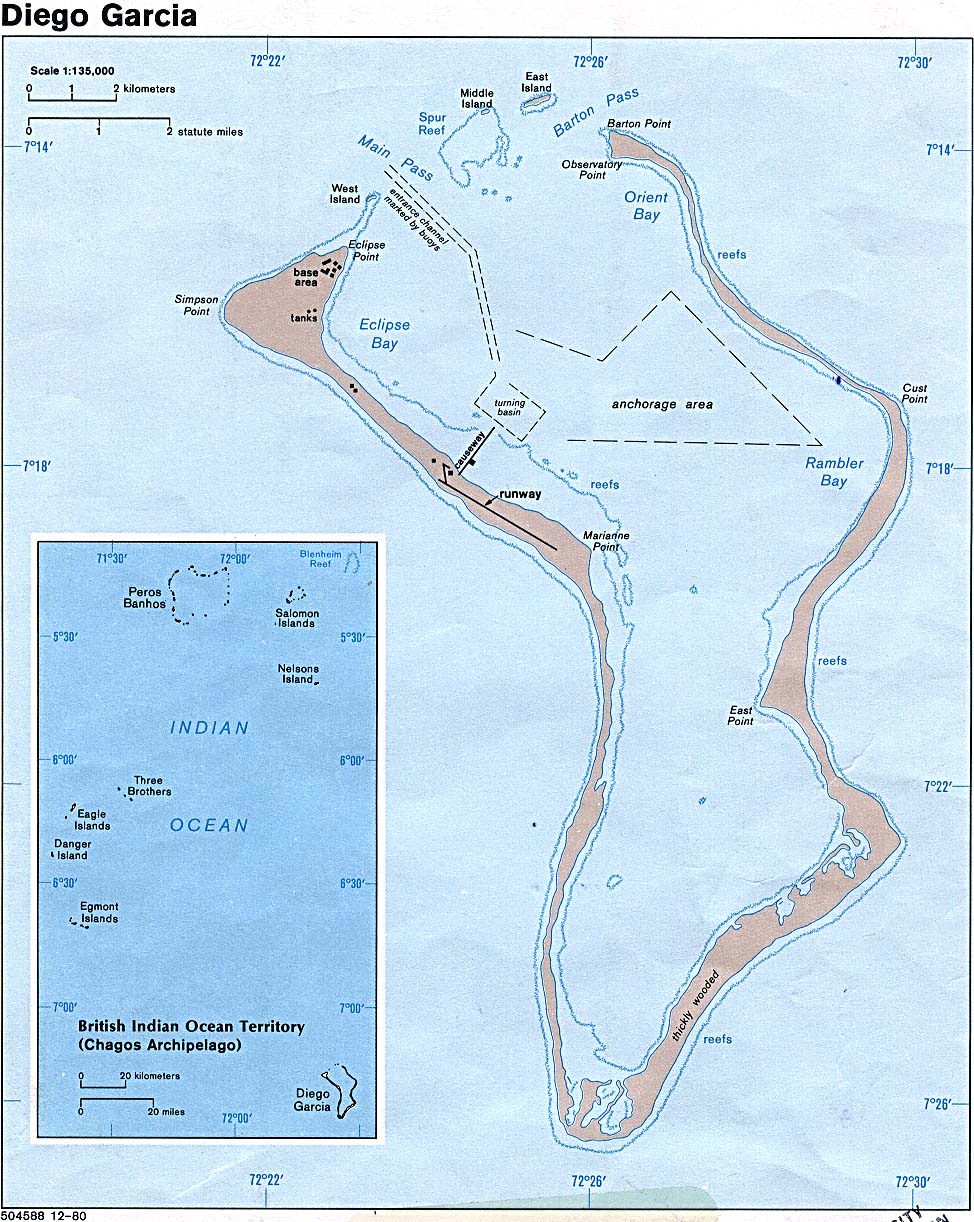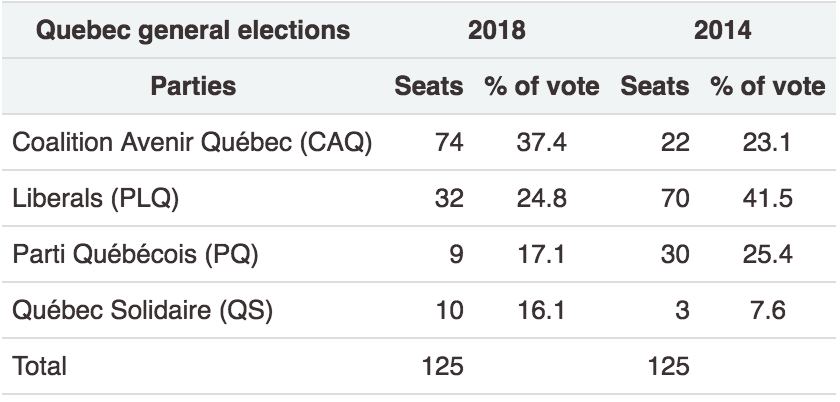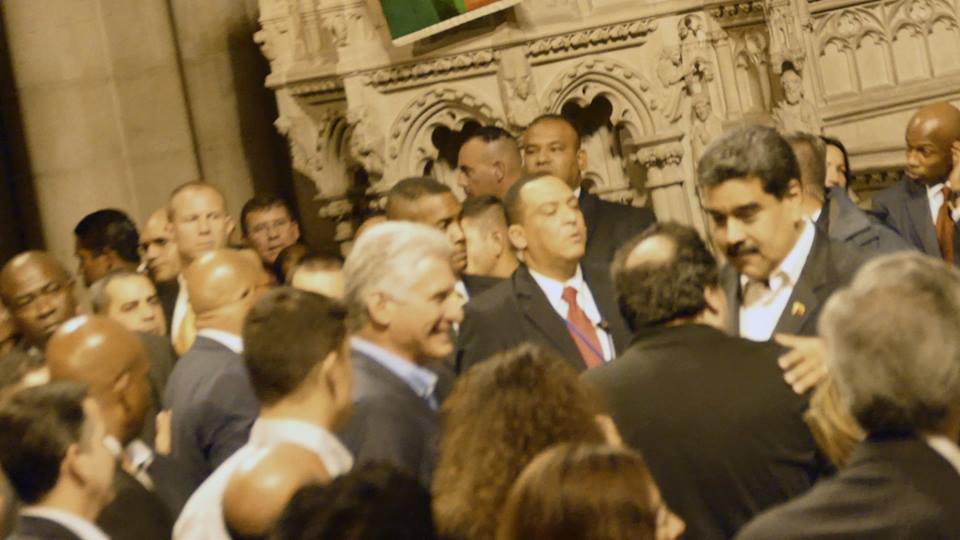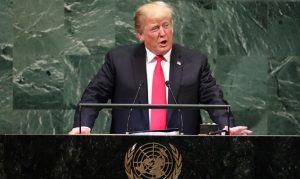Introduction and Update
While the mainstream media has its eyes riveted on alleged Russian interference in Canada, without a shred of evidence, recent developments pertaining to the enactment of NAFTA 2.0, visibly point to US meddling in Canada’s internal affairs.
In fact routine US political and corporate meddling is an integral part of Canada’s history since 1866, one year before Confederation.
The Bill to Annex Canada into the US approved by the US Congress in 1866 preceded the 1867 Alaska Purchase from Russia and the subsequent establishment of the Canadian Confederation under The British North America Act of 1867. (Full text of bill in Annex)
Who is a threat to Canada’s national sovereignty. Russia or the United States?
“The Russians are Coming” to Canada.
According to Canada’s media the Kremlin wants to create divisions within Canadian Society which contribute to undermining Canadian democracy.
According to NATO’s Strategic Communications Centre Centre for Excellence based in Latvia, the Kremlin is intent upon disrupting Canada’s 2019 federal elections.

Screenshot CBC webside February 27, 2018
A leading NATO researcher says Canada should assume Russia will attempt to interfere in the 2019 federal election because that would serve the Kremlin’s purpose of helping destabilize the military alliance.
The allegations of Russian meddling in the 2016 U.S. presidential election as well as its attempts to disrupt votes in Germany, France, the Netherlands and the Czech Republic, among other countries, makes Canada a natural target, Janis Sarts, the director of the NATO Strategic Communications Centre of Excellence said in an interview. (Canadian Press, CBC Website, February 27, 2018)
The following article first published by GR in 2005 (with some recent additions) reviews something which most Canadians are unaware of:
From the late 1920s until the outbreak of World War II in 1939, the US had plans to invade Canada.
Confirmed by declassified documents, a “humanitarian” warfare agenda had been contemplated in the course of the 1930s.
In a bitter irony, the use of Chemical weapons were to be used against Canadian civilians with General Douglas McArthur (who ordered the fire bombing of Japanese cities during World War II) in charge of designing the bombing raids against Vancouver.
This is no laughing matter, The relevant national security documents were declassified in 1974.
Michel Chossudovsky, October 4, 2018
***
A 2005 Washington Post article entitled:
Raiding the Icebox; Behind Its Warm Front, the United States Made Cold Calculations to Subdue Canada, by Peter Carlson (30 December 2005),
focuses on a detailed US Plan to Invade Canada entitled “Joint Army and Navy Basic War Plan — Red,” It was formulated in the late 1920s, approved by the US War Department in 1930, updated in 1934 and 1935, withdrawn in 1939 and declassified in 1974. (See complete WP article below)
Following the publication of the WP article, which was casually presented as political humor, Canadian network TV and print media were quick to dismiss the matter outright.
It was in a bygone era. It no longer applies: the US administration would never dream of actually invading Canada.
Yet upon more careful examination, an ongoing plan to annex Canada to the US, is still (unofficially of course) on the books. The underlying procedure, however, is not straightforward as in the case of an outright military invasion (e.g. under the 1930 “Joint Army and Navy Basic War Plan — Red”). Today, it involves what the media refer to as “Deep Integration”, which constitutes a more polite term for “Annexation”.
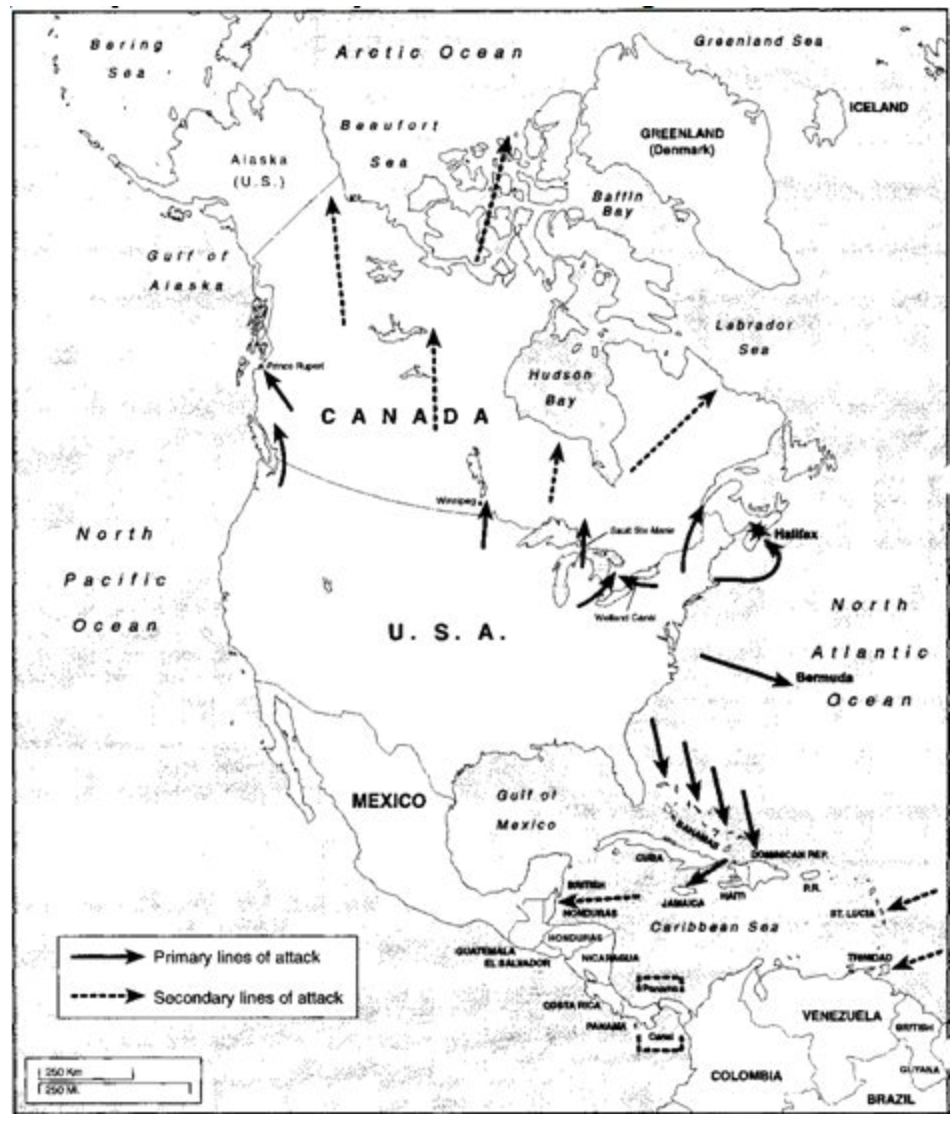
“The Icebox” in the WP article refers euphemistically to a country we call Canada, a vast territory of strategic significance for the US, with tremendous resources extending from Coast to Coast; South from the St Lawrence Valley to the North West territories and the US Alaska border.
If U.S. war plans for the conquest of Canada provoke laughter (WaPo and Globe and Mail), that is a comment on those who are laughing, not a comment on the war plans.
In its day, War Plan RED was not meant to be funny. The 1928 draft stated that “it should be made quite clear to Canada that in a war she would suffer grievously”. The 1930 draft stated that “large parts of CRIMSON territory will become theaters of military operations with consequent suffering to the population and widespread destruction and devastation of the country…”
In October 1934, the Secretary of War and Secretary of Navy approved an amendment authorizing the strategic bombing of Halifax, Montreal and Quebec City by “immediate air operations on as large a scale as practicable.” A second amendment, also approved at the Cabinet level, directed the U.S. Army, in capital letters, “TO MAKE ALL NECESSARY PREPARATIONS FOR THE USE OF CHEMICAL WARFARE FROM THE OUTBREAK OF WAR. THE USE OF CHEMICAL WARFARE, INCLUDING THE USE OF TOXIC AGENTS, FROM THE INCEPTION OF HOSTILITIES, IS AUTHORIZED…”
The use of poison gas was conceived as an humanitarian action that would cause Canada to quickly surrender and thus save American lives. (Commander Carpender, A. S., & Colonel Krueger, W. (1934), memo to the Joint Board, Oct. 17, 1934, available in U.S. National Archive in documents appended to War Plan RED.)
In March 1935, General Douglas MacArthur proposed an amendment making Vancouver a priority target comparable to Halifax and Montreal. This was approved in May 1935, and in October 1935, his son Douglas MacArthur Jr. began his espionage career as vice-consul in Vancouver. In August 1935, the U.S.A. held its then largest ever peace time military maneuvers, with more than 50,000 troops practicing a motorized invasion of Canada, duly reported in the New York Times by its star military reporter, Hanson Baldwin.
Floyd Rudmin, Plan Red, Counterpunch, 2006 (emphasis added)
US Northern Command
The “invasion” of Canada is in many regards a fait accompli, a done deal. In 2002, when US Northern Command (NorthCom) was launched, Defense Secretary Donald Rumsfeld stated unilaterally that the US Military could cross the border and deploy troops anywhere in Canada, in our provinces, as well station American warships in Canadian territorial waters.
More specifically, the redesign of Canada’s defense system has been discussed behind closed doors at the Peterson Air Force base in Colorado, at the headquarters of US Northern Command (NORTHCOM). US Northern Command’s jurisdiction as outlined by the US DoD includes, in addition to the continental US, all of Canada, Mexico, as well as portions of the Caribbean, contiguous waters in the Atlantic and Pacific oceans up to 500 miles off the Mexican, US and Canadian coastlines as well as the Canadian Arctic.
Rumsfeld is said to have boasted that “the NORTHCOM – with all of North America as its geographic command – ‘is part of the greatest transformation of the Unified Command Plan [UCP] since its inception in 1947.
This “bi-national integration” of Canada has, since 2002, been the object of continuous negotiations between Washington and Ottawa. Upon the completion of these negotiations, Canada is slated to become member of NorthCom in 2006.
A year ago, in November 2004, I addressed these issues in a detailed article entitled:
Is the Annexation of Canada Part of the Bush Administration’s Military Agenda
While the article was widely circulated and debated on the internet, it was never cited or quoted by Canada’s mainstream media.
A shortened version of the article was submitted for publication as an Oped piece to a major Toronto daily paper, which initially expressed interest in publishing it.
Following several email exchanges, the shortened article was accepted for publication on three separate occasions. But it never appeared in print. A few months ago, the article, received a 2006 Project Censored Award by the University of California, Sonoma, School of Journalism.
With a view to promoting debate as well as media awareness prior to the January 2006 federal elections, we reproduce the following documents:
1. The article in the Washington Post entitled: Raiding the Icebox; Behind Its Warm Front, the United States Made Cold Calculations to Subdue Canada, by Peter Carlson, 30 December 2005.
2. Is the Annexation of Canada Part of the Bush Administration’s Military Agenda, by Michel Chossudovsky, Global Research, November 2004
3. US, Canada and Mexico rollout border plans, by Shaun Waterman, UPI, July 2005
4. “Securing the North American Security Perimeter” Dismantling the US Border, Bringing Canada and Mexico into Fortress America, June 10, 2005 CNN
5. Mexico and U.S. put “Security Perimeter” on fast-track, Mexidata, by José Carreño, May 20, 2005.
6. The Bill to Annex Canada into the US (1866). [Text of Bill approved by the US Congress in 1866. The latter preceded the 1867 Alaska Purchase from Russia and the subsequent establishment of the Canadian Confederation under The British North America Act of 1867. Read the text of this Bill carefully. It is still relevant. Incidentally the term “Icebox” was first used in relation to the Alaska Purchase.]
ANNEX
Raiding the Icebox; Behind Its Warm Front, the United States Made Cold Calculations to Subdue Canada
by Peter Carlson,
Washington Post, 30 December 2005
Invading Canada won’t be like invading Iraq: When we invade Canada, nobody will be able to grumble that we didn’t have a plan.
The United States government does have a plan to invade Canada. It’s a 94-page document called “Joint Army and Navy Basic War Plan — Red,” with the word SECRET stamped on the cover. It’s a bold plan, a bodacious plan, a step-by-step plan to invade, seize and annex our neighbor to the north. It goes like this:
First, we send a joint Army-Navy overseas force to capture the port city of Halifax, cutting the Canadians off from their British allies.
Then we seize Canadian power plants near Niagara Falls, so they freeze in the dark.
Then the U.S. Army invades on three fronts — marching from Vermont to take Montreal and Quebec, charging out of North Dakota to grab the railroad center at Winnipeg, and storming out of the Midwest to capture the strategic nickel mines of Ontario.
Meanwhile, the U.S. Navy seizes the Great Lakes and blockades Canada’s Atlantic and Pacific ports.
At that point, it’s only a matter of time before we bring these Molson-swigging, maple-mongering Zamboni drivers to their knees! Or, as the official planners wrote, stating their objective in bold capital letters: “ULTIMATELY TO GAIN COMPLETE CONTROL.”
It sounds like a joke but it’s not. War Plan Red is real. It was drawn up and approved by the War Department in 1930, then updated in 1934 and 1935. It was declassified in 1974 and the word “SECRET” crossed out with a heavy pencil. Now it sits in a little gray box in the National Archives in College Park, available to anybody, even Canadian spies. They can photocopy it for 15 cents a page.
War Plan Red was actually designed for a war with England. In the late 1920s, American military strategists developed plans for a war with Japan (code name Orange), Germany (Black), Mexico (Green) and England (Red). The Americans imagined a conflict between the United States (Blue) and England over international trade: “The war aim of RED in a war with BLUE is conceived to be the definite elimination of BLUE as an important economic and commercial rival.”
In the event of war, the American planners figured that England would use Canada (Crimson) — then a quasi-pseudo-semi-independent British dominion — as a launching pad for “a direct invasion of BLUE territory.” That invasion might come overland, with British and Canadian troops attacking Buffalo, Detroit and Albany. Or it might come by sea, with amphibious landings on various American beaches — including Rehoboth and Ocean City, both of which were identified by the planners as “excellent” sites for a Brit beachhead.
The planners anticipated a war “of long duration” because “the RED race” is “more or less phlegmatic” but “noted for its ability to fight to a finish.” Also, the Brits could be reinforced by “colored” troops from their colonies: “Some of the colored races however come of good fighting stock, and, under white leadership, can be made into very efficient troops.”
The stakes were high: If the British and Canadians won the war, the planners predicted, “CRIMSON will demand that Alaska be awarded to her.”
Imagine that! Canada demanding a huge chunk of U.S. territory! Them’s fightin’ words! And so the American strategists planned to fight England by seizing Canada. (Also Jamaica, Barbados and Bermuda.) And they didn’t plan to give them back.
“Blue intentions are to hold in perpetuity all CRIMSON and RED territory gained,” Army planners wrote in an appendix to the war plan. “The policy will be to prepare the provinces and territories of CRIMSON and RED to become states and territories of the BLUE union upon the declaration of peace.”
None of this information is new. After the plan was declassified in 1974, several historians and journalists wrote about War Plan Red. But still it remains virtually unknown on both sides of the world’s largest undefended border.
“I’ve never heard of it,” said David Biette, director of the Canada Institute in Washington, which thinks about Canada.
“I remember sort of hearing about this,” said Bernard Etzinger, spokesman for the Canadian Embassy in Washington.
“It’s the first I’ve heard of it,” said David Courtemanche, mayor of Sudbury, Ontario, whose nickel mines were targeted in the war plan.
Pentagon spokesman Bryan Whitman said he’d never heard of the plan. He also said he wouldn’t admit to knowing about such a plan if he did.
“We don’t talk about any of our contingency plans,” he said.
Has the Pentagon updated War Plan Red since the ’30s?
“The Defense Department never talks about its contingency plans for any countries,” Whitman said. “We don’t acknowledge which countries we have contingency plans for.”
Out in Winnipeg — the Manitoba capital, whose rail yards were slated to be seized in the plan — Brad Salyn, the city’s director of communications, said he didn’t think Winnipeg Mayor Sam Katz knew anything about War Plan Red: “You know he would have no clue about what you’re talking about, eh?”
“I’m sure Winnipeggers will stand up tall in defense of our country,” Mayor Katz said later. “We have many, many weapons.”
What kind of weapons?
“We have peashooters, slingshots and snowballs,” he said, laughing.
But the Canadians’ best weapon, Katz added, is their weather. “It gets to about minus-50 Celsius with a wind chill,” he said. “It will be like Napoleon’s invasion of Russia. I’m quite convinced that you’ll meet your Waterloo on the banks of the Assiniboine River.”
As it turns out, Katz isn’t the first Canadian to speculate on how to fight the U.S.A. In fact, Canadian military strategists developed a plan to invade the United States in 1921 — nine years before their American counterparts created War Plan Red.
The Canadian plan was developed by the country’s director of military operations and intelligence, a World War I hero named James Sutherland “Buster” Brown. Apparently Buster believed that the best defense was a good offense: His “Defence Scheme No. 1” called for Canadian soldiers to invade the United States, charging toward Albany, Minneapolis, Seattle and Great Falls, Mont., at the first signs of a possible U.S. invasion.
“His plan was to start sending people south quickly because surprise would be more important than preparation,” said Floyd Rudmin, a Canadian psychology professor and author of “Bordering on Aggression: Evidence of U.S. Military Preparations Against Canada,” a 1993 book about both nations’ war plans. “At a certain point, he figured they’d be stopped and then retreat, blowing up bridges and tearing up railroad tracks to slow the Americans down.”
Brown’s idea was to buy time for the British to come to Canada’s rescue. Buster even entered the United States in civilian clothing to do some reconnaissance.
“He had a total annual budget of $1,200,” said Rudmin, “so he himself would drive to the areas where they were going to invade and take pictures and pick up free maps at gas stations.”
Rudmin got interested in these war plans in the 1980s when he was living in Kingston, Ontario, just across the St. Lawrence River from Fort Drum, the huge Army base in Upstate New York. Why would the Americans put an Army base in such a wretched, frigid wilderness? he wondered. Could it be there to . . . fight Canada?
He did some digging. He found “War Plan Red” and “Defence Scheme No. 1.” At the Army War College in Carlisle, Pa., he found a 1935 update of War Plan Red, which specified which roads to use in the invasion (“The best practicable route to Vancouver is via Route 99”).
Rudmin also learned about an American plan from 1935 to build three military airfields near the Canadian border and disguise them as civilian airports. The secret scheme was revealed after the testimony of two generals in a closed-door session of the House Military Affairs Committee was published by mistake. When the Canadian government protested the plan, President Franklin Roosevelt reassured it that he wasn’t contemplating war. The whole brouhaha made the front page of the New York Times on May 1, 1935.
That summer, however, the Army held what were the biggest war games in American history on the site of what is now Fort Drum, Rudmin said.
Is he worried that the Yanks will invade his country from Fort Drum?
“Not now,” he said. “Now the U.S. is kind of busy in Iraq. But I wouldn’t put it past them.”
He’s not paranoid, he hastened to add, and he doesn’t think the States will simply invade Canada the way Hitler invaded Russia.
But if some kind of crisis — perhaps something involving the perennially grumpy French Canadians — destabilized Canada, then . . . well, Fort Drum is just across the river.
“We most certainly are not preparing to invade Canada,” said Ben Abel, the official spokesman for Fort Drum.
The fort, he added, is home to the legendary 10th Mountain Division, which is training for its third deployment in Afghanistan. There are also 1,200 Canadian troops in Afghanistan.
“I find it very hard to believe that we’d be planning to invade Canada,” Abel said. “We have a lot of Canadian soldiers training here. I bumped into a Canadian officer in the bathroom the other day.”
Invading Canada is an old American tradition. Invading Canada successfully is not.
During the American Revolution, Benedict Arnold — then in his pre-traitor days — led an invasion of Canada from Maine. It failed.
During the War of 1812, American troops invaded Canada several times. They were driven back.
In 1839, Americans from Maine confronted Canadians in a border dispute known as the Aroostook War.
“There were never any shots fired,” said Etzinger, the Canadian Embassy spokesman, “but I think an American cow was injured — and a Canadian pig.”
In 1866, about 800 Irish Americans in the Fenian Brotherhood decided to strike a blow for Irish independence by invading Canada. They crossed the Niagara River into Ontario, where they defeated a Canadian militia. But when British troops approached, the Fenians fled back to the United States, where many were arrested.
After that, Americans stopped invading Canada and took up other hobbies, such as invading Mexico, Haiti, Nicaragua, Grenada and, of course, Iraq.
But the dream of invading Canada lives on in the American psyche, occasionally manifesting itself in bizarre ways. Movies, for instance.
In the 1995 movie “Canadian Bacon,” the U.S. president, played by Alan Alda, decides to jump-start the economy by picking a fight with Canada. His battle cry: “Surrender pronto or we’ll level Toronto.”
In the 1999 movie “South Park: Bigger, Longer & Uncut,” Americans, angered that their kids have been corrupted by a pair of foulmouthed, flatulent Canadian comedians, go to war. Canada responds by sending its air force to bomb the Hollywood home of the Baldwin brothers — a far more popular defensive strategy than anything Buster Brown devised. Moviegoers left theaters humming the film’s theme:
Blame Canada! Blame Canada!
With all their hockey hullabaloo
And that bitch Anne Murray too!
Blame Canada! Shame on Canada!
But it’s not just movies. The urge to invade Canada comes in myriad forms.
In 2002, the conservative magazine National Review published an essay called “Bomb Canada: The Case for War.” The author, Jonah Goldberg, suggested that the United States “launch a quick raid into Canada” and blow something up — “perhaps an empty hockey stadium.” That would cause Canada to stop wasting its money on universal health insurance and instead fund a military worthy of the name, so that “Canada’s neurotic anti-Americanism would be transformed into manly resolve.”
And let’s not forget the Web site InvadeCanada.US, which lists many compelling reasons for doing do: “let’s make Alaska actually connected to the U.S. again!” and “they’re just a little too proud” and “the surrender will come quickly, they’re French after all.”
The site also sells T-shirts, buttons, teddy bears and thong underwear, all of them decorated with the classic picture of Uncle Sam atop the slogan “I WANT YOU to Invade Canada.”
What’s going on here? Why do Americans love to joke about invading Canada?
Because Americans see Canadians as goody-goodies, said Biette, the Canada Institute director. Canadians didn’t rebel against the British, remaining loyal colonial subjects. They didn’t have a Wild West, settling their land without the kind of theatrical gunfights that make for good movies. And they like to hector us about our misbehavior.
“We’re ‘life, liberty and the pursuit of happiness’ and they’re ‘peace, order and good government,’ ” Biette said. “So if you’re a wild American, you look at them and say, ‘They’re just a bunch of Boy Scouts.’ ”
Canadians are well aware of our invasion talk. Not surprisingly, they take it a bit more seriously than we do.
When “The West Wing” had a subplot last winter about a U.S.-Canada border incident, Canadian newspapers took note.
When Jon Stewart joked about invading Canada on “The Daily Show” last March, Canadian newspapers covered the story.
When the Toronto Star interviewed comedian Jimmy Kimmel last year, the reporter asked him: “Is it only a matter of time before America invades Canada?”
“I’m not sure,” Kimmel replied.
In 2003, the Canadian army set up an Internet chat room where soldiers and civilians could discuss defense issues. “One of the hottest topics on the site discusses whether the U.S. will invade Canada to seize its natural resources,” the Ottawa Citizen reported. “If the attack did come, Canada could rely on a scorched-earth policy similar to what Russia did when invaded by Nazi Germany, one participant recommends. ‘With such emmense [sic] land, and with our cold climates, we may be able to hold them off, even though we have the much weaker military,’ the individual concludes.”
Etzinger, the Canadian Embassy spokesman, isn’t worried about an American invasion because Canada has a secret weapon — actually thousands of secret weapons.
“We’ve got thousands of Canadians in the U.S. right now, in place secretly,” he said. “They could be on your street. We’ve sent people like Celine Dion and Mike Myers to secretly infiltrate American society.”
Pretty funny, Mr. Etzinger. But the strategists who wrote War Plan Red were prepared for that problem. They noted that “it would be necessary to deal internally” with the “large number” of Brits and Canadians living in the United States — and also with “a small number of professional pacifists and communists.”
The planners did not specify exactly what would be done with those undesirables. But it would be kinda fun to see Celine Dion and Mike Myers wearing orange jumpsuits down in Guantanamo.
Copyright, Washington Post 2005
By Michel Chossudovsky
June 20, 2005 Global Research, originally published in November 2004 – 2004-11-23
SUMMARY [For the complete article published by Global Research click here ]
Territorial control over Canada is part of Washington’s geopolitical and military agenda as formulated in April 2002 by Defense Secretary Donald Rumsfeld. “Binational integration” of military command structures is also contemplated alongside a major revamping in the areas of immigration, law enforcement and intelligence.
At this critical juncture in our history and in anticipation of the visit of George W. Bush to Canada on November 30th, an understanding of these issues is central to the articulation of a coherent anti-war and civil rights movement.
For nearly two years now, Ottawa has been quietly negotiating a far-reaching military cooperation agreement, which allows the US Military to cross the border and deploy troops anywhere in Canada, in our provinces, as well station American warships in Canadian territorial waters. This redesign of Canada’s defense system is being discussed behind closed doors, not in Canada, but at the Peterson Air Force base in Colorado, at the headquarters of US Northern Command (NORTHCOM).
The creation of NORTHCOM announced in April 2002, constitutes a blatant violation of both Canadian and Mexican territorial sovereignty. Defense Secretary Donald Rumsfeld announced unilaterally that US Northern Command would have jurisdiction over the entire North American region. Canada and Mexico were presented with a fait accompli. US Northern Command’s jurisdiction as outlined by the US DoD includes, in addition to the continental US, all of Canada, Mexico, as well as portions of the Caribbean, contiguous waters in the Atlantic and Pacific oceans up to 500 miles off the Mexican, US and Canadian coastlines as well as the Canadian Arctic.
NorthCom’s stated mandate is to “provide a necessary focus for [continental] aerospace, land and sea defenses, and critical support for [the] nation’s civil authorities in times of national need.”
(Canada-US Relations – Defense Partnership – July 2003, Canadian American Strategic Review (CASR), http://www.sfu.ca/casr/ft-lagasse1.htm
Rumsfeld is said to have boasted that “the NORTHCOM – with all of North America as its geographic command – ‘is part of the greatest transformation of the Unified Command Plan [UCP] since its inception in 1947.'” (Ibid)
Following Prime Minister Jean Chrétien’s refusal to join NORTHCOM, a high-level so-called “consultative” Binational Planning Group (BPG), operating out of the Peterson Air Force base, was set up in late 2002, with a mandate to “prepare contingency plans to respond to [land and sea] threats and attacks, and other major emergencies in Canada or the United States”.
The BPG’s mandate goes far beyond the jurisdiction of a consultative military body making “recommendations” to government. In practice, it is neither accountable to the US Congress nor to the Canadian House of Commons.
The BPG has a staff of fifty US and Canadian “military planners”, who have been working diligently for the last two years in laying the groundwork for the integration of Canada-US military command structures. The BPG works in close coordination with the Canada-U.S. Military Cooperation Committee at the Pentagon, a so-called ” panel responsible for detailed joint military planning”.
Broadly speaking, its activities consist of two main building blocks: the Combined Defense Plan (CDP) and The Civil Assistance Plan (CAP).
The Militarisation of Civilian Institutions
As part of its Civil Assistance Plan (CAP), the BPG is involved in supporting the ongoing militarisation of civilian law enforcement and judicial functions in both the US and Canada. The BPG has established “military contingency plans” which would be activated “on both sides of the Canada-US border” in the case of a terror attack or “threat”. Under the BPG’s Civil Assistance Plan (CAP), these so-called “threat scenarios” would involve:
“coordinated response to national requests for military assistance [from civil authorities] in the event of a threat, attack, or civil emergency in the US or Canada.”
In December 2001, in response to the 9/11 attacks, the Canadian government reached an agreement with the Head of Homeland Security Tom Ridge, entitled the “Canada-US Smart Border Declaration.” Shrouded in secrecy, this agreement essentially hands over to the Homeland Security Department, confidential information on Canadian citizens and residents. It also provides US authorities with access to the tax records of Canadians.
What these developments suggest is that the process of “binational integration” is not only occurring in the military command structures but also in the areas of immigration, police and intelligence. The question is what will be left over within Canada’s jurisdiction as a sovereign nation, once this ongoing process of binational integration, including the sharing and/or merger of data banks, is completed?
Canada and NORTHCOM
Canada is slated to become a member of NORTHCOM at the end of the BPG’s two years mandate.
No doubt, the issue will be presented in Parliament as being “in the national interest”. It “will create jobs for Canadians” and “will make Canada more secure”.
Meanwhile, the important debate on Canada’s participation in the US Ballistic Missile Shield, when viewed out of the broader context, may serve to divert public attention away from the more fundamental issue of North American military integration which implies Canada’s acceptance not only of the Ballistic Missile Shield, but of the entire US war agenda, including significant hikes in defense spending which will be allocated to a North American defense program controlled by the Pentagon.
And ultimately what is at stake is that beneath the rhetoric, Canada will cease to function as a Nation:
Its borders will be controlled by US officials and confidential information on Canadians will be shared with Homeland Security. US troops and Special Forces will be able to enter Canada as a result of a binational arrangement. Canadian citizens can be arrested by US officials, acting on behalf of their Canadian counterparts and vice versa. But there is something perhaps even more fundamental in defining and understanding where Canada and Canadians stand as a Nation.
The World is at the crossroads of the most serious crisis in modern history. The US has launched a military adventure which threatens the future of humanity. It has formulated the contours of an imperial project of World domination. Canada is contiguous to “the center of the empire”. Territorial control over Canada is part of the US geopolitical and military agenda.
The Liberals as well as the opposition Conservative party have embraced the US war agenda.
By endorsing a Canada-US “integration” in the spheres of defense, homeland security, police and intelligence, Canada not only becomes a full fledged member of George W. Bush’s “Coalition of the Willing”, it will directly participate, through integrated military command structures, in the US war agenda in Central Asia and the Middle East, including the massacre of civilians in Iraq and Afghanistan, the torture of POWs, the establishment of concentration camps, etc.
Under an integrated North American Command, a North American national security doctrine would be formulated. Canada would be obliged to embrace Washington’s pre-emptive military doctrine, including the use of nuclear warheads as a means of self defense, which was ratified by the US Senate in December 2003. (See Michel Chossudovsky, The US Nuclear Option and the “War on Terrorism” http://globalresearch.ca/articles/CHO405A.html May 2004)
Moreover, binational integration in the areas of Homeland security, immigration, policing of the US-Canada border, not to mention the anti-terrorist legislation, would imply pari passu acceptance of the US sponsored police State, its racist policies, its “ethnic profiling” directed against Muslims, the arbitrary arrest of anti-war activists.
For text of complete Article by Michel Chossudovsky click here
US, Canada and Mexico rollout border plans
by Shaun Waterman, UPI, June 28, 2005
WASHINGTON — The United States and its North American neighbors say they will set up a trusted traveler scheme for the whole continent by 2008, and will this year develop a plan to respond together to major terror attacks and other incidents.
Trusted traveler programs enable people who provide biometric personal data — like fingerprints or iris scans — pay a fee and submit to background checks to use special travel lanes at border crossings.
The idea is to speed processing for those travelers not thought security risks, and whose identity can be verified biometrically.
A Department of Homeland Security statement Monday said that air and sea ports would also be included.
The program, first unveiled last week at a House panel by homeland security official Elaine Dezenski, would incorporate both NEXUS and SENTRI — the two trusted traveler programs currently run at the U.S. border.
DHS spokesman Russ Knocke told United Press International that details of the scheme — including whether it would employ biometrics — have yet to be finalized, but added that biometrics was “the direction everything’s moving in, identity-wise.”
Answering reporters’ questions about the scheme in Ottawa Monday, U.S. Homeland Security Secretary Michael Chertoff said “the way forward ultimately, not just with respect to North America, but with respect to the world, is biometrics.”
The program is part of a hugely ambitious initiative launched by President Bush, Mexican President Vincente Fox and Canadian Prime Minister Paul Martin on March 23 this year, following their summit at the president’s Crawford, Texas ranch.
Ultimately, the Security and Prosperity Partnership for North America, as it is called, aims to standardize border admissions procedures — watchlist checks, visa processing and document standards — to the point where “all travelers arriving in North America will experience a comparable level of screening,” according to a homeland security fact sheet.
The program was announced Monday following a meeting in Ottawa, Canada, between Chertoff and his opposite numbers — Mexican Interior Secretary Carlos Abascal and Canadian Deputy Prime Minister for Public Safety and Emergency Preparedness Anne McLellan.
The three were joined by U.S. Secretary of Commerce Carlos Gutierrez, Canadian Minister of Industry David Emerson and Mexican Secretary of the Economy Fernando Canales.
The meeting, the first in a series of planned follow-ons to the March summit, also agreed that the three nations would work towards “compatible biometric border and immigration systems,” announced the elimination of a series of regulatory barriers and other impediments to cross-border commerce, and committed to a comprehensive plan for responding together to major terror attacks and other incidents.
Within 12 months, the fact sheet says, the three nations will have established “protocols for incident management that impact border operations (and for) maritime incidents, cross-border public health emergencies and cross-border law enforcement response.”
Co-operation on incident response will also include “interoperable communications systems” and joint preparedness exercises, including one ahead of the 2010 Vancouver Winter Olympics.
The United States and Mexico also agreed to form joint intelligence-sharing task forces along their border “to target criminal gang and trafficking organizations.”
The three countries also committed to work towards “compatible criteria for the posting of lookouts of suspected terrorists and criminals” and “real time information sharing on high risk individuals and cargos.”
This last element of the plans may prove controversial in Canada, where public opinion seems concerned that a closer security relationship with the United States might jeopardize Canada’s traditionally welcoming attitude toward asylum seekers or require an unnerving degree of information sharing.
The case of Maher Arar has dramatized Canadian concerns about counter-terror cooperation. Arar is a Syrian-born Canadian citizen who was shipped to Syria — where he was tortured — by U.S. authorities after Canadian intelligence identified him to them as a suspected associate of a suspected terrorist.
“The real time sharing of information with U.S. security agencies about a foreigner visiting Vancouver with no intention of entering the United States seems certain to cause a stir,” opined the Toronto Globe and Mail earlier this year, adding that just such transparency would be necessary to the most ambitious visions of a common U.S.-Canadian security frontier.
In Mexico, attention is fixed on different questions about the partnership — which Mexican officials refer to as the Security, Prosperity and Quality of Life Partnership.
“Why has the initiative not included funding provisions for reducing the economic gap between Mexico and the United States and Canada?” asked a Mexican reporter of Chertoff and Gutierrez.
Copyright UPI, 2005
“Securing the North American Security Perimeter” Dismantling the US Border, Bringing Canada and Mexico into Fortress America
CNN, June 10, 2005
Excerpt
DOBBS: Border security is arguably the critical issue in this country’s fight against radical Islamist terrorism. But our borders remain porous. So porous that three million illegal aliens entered this country last year, nearly all of them from Mexico.
Now, incredibly, a panel sponsored by the Council on Foreign Relations wants the United States to focus not on the defense of our own borders, but rather create what effectively would be a common border that includes Mexico and Canada.
Christine Romans has the report.
(BEGIN VIDEOTAPE) RELATED: Internationalizing US Roads
Task force urges creation of ‘Fortress America’
New PNAC/neocon front group pushing tri-national ID on 9/11 corpse
CHRISTINE ROMANS, CNN CORRESPONDENT (voice-over): On Capitol Hill, testimony calling for Americans to start thinking like citizens of North America and treat the U.S., Mexico and Canada like one big country.
ROBERT PASTOR, IND. TASK FORCE ON NORTH AMERICA: The best way to secure the United States today is not at our two borders with Mexico and Canada, but at the borders of North America as a whole.
ROMANS: That’s the view in a report called “Building a North American Community.” It envisions a common border around the U.S., Mexico and Canada in just five years, a border pass for residents of the three countries, and a freer flow of goods and people.
Task force member Robert Pastor.
PASTOR: What we hope to accomplish by 2010 is a common external tariff which will mean that goods can move easily across the border. We want a common security perimeter around all of North America, so as to ease the travel of people within North America.
ROMANS: Buried in 49 pages of recommendations from the task force, the brief mention, “We must maintain respect for each other’s sovereignty.” But security experts say folding Mexico and Canada into the U.S. is a grave breach of that sovereignty.
FRANK GAFFNEY, CENTER FOR SECURITY POLICY: That’s what would happen if anybody serious were to embrace this strategy for homogenizing the United States and its sovereignty with the very different systems existing today in Canada and Mexico. RESOURCES: AZTLAN – the plan for ‘reconquista’.
ROMANS: Especially considering Mexico’s problems with drug trafficking, human smuggling and poverty. Critics say the country is just too far behind the U.S. and Canada to be included in a so-called common community. But the task force wants military and law enforcement cooperation between all three countries.
UNIDENTIFIED MALE: Indeed, an exchange of personnel that bring Canadians and Mexicans into the Department of Homeland Security.
ROMANS: And it wants temporary migrant worker programs expanded with full mobility of labor between the three countries in the next five years.
(END VIDEOTAPE)
ROMANS: The idea here is to make North America more like the European Union. Yet, just this week, voters in two major countries in the European Union voted against upgrading — updating the European constitution. So clearly, this is not the best week to be trying to sell that idea.
DOBBS: Americans must think that our political and academic elites have gone utterly mad at a time when three-and-a-half years, approaching four years after September 11, we still don’t have border security. And this group of elites is talking about not defending our borders, finally, but rather creating new ones. It’s astonishing.
ROMANS: The theory here is that we are stronger together, three countries in one, rather than alone.
DOBBS: Well, it’s a — it’s a mind-boggling concept. Christine Romans, thank you, as always.
There is no greater example than our next story as to why the United States must maintain its border security with Mexico, and importantly, secure that border absolutely. The police chief of the violent Mexican border town, Nuevo Laredo, was today executed. It was his first day on the job.
Alejandro Dominguez, seen here at his swearing-in ceremony, was ambushed by a number of gunmen several hours just after that ceremony as he left his office. The assassins fired more than three dozen rounds that struck Dominguez.
He was the only person who volunteered to become Nuevo Laredo’s police chief. The position has been vacant for weeks after the previous chief of police resigned. The town is at the center of what is a violent war between Mexican drug lords. The State Department has issued two travel warnings for Americans about that area just this year. And amazingly, the Mexican government calls those State Department warnings unnecessary.
Still ahead, the military recruiting crisis is escalating. New questions tonight about the viability of the all-volunteer military. General David Grange is our guest.
And “Living Dangerously,” our special report. Rising population growth in the West, dangerous water shortages, the worst drought arguably ever. We’ll have that report for you next.
(COMMERCIAL BREAK)
RECOGNIZING the contributions of the OAS and other regional and sub-regional mechanisms to the promotion and consolidation of democracy in the Americas;…
Copyright CNN 2005
Mexico and U.S. put “Security Perimeter” on fast-track
by José Carreño, Mexidata, May 20, 2005
Washington, D.C.- Task force groups from the U.S. and Mexico are working together, on a fast-track basis, on in-depth reforms to national security relations between the two countries.
The delegations are working on the creation of a “North American Security Perimeter,” that among other factors includes the identification of targets vulnerable to terrorism along the common border.
Gerónimo Gutiérrez, Mexico’s Undersecretary of Foreign Relations, said that the negotiations are going well, with an initial session for proposals scheduled for June.
The border area security plan is being discussed at the U.S. Department of Homeland Security and Mexican National Security and Investigation/Research Center (Cisen) levels.
National security officials and analysts noted that authorities in both countries have suggested the possibility of terrorist attacks on tourist destinations frequented by U.S. citizens
Copyright Mexidata 2005
The Bill to Annex Canada into the US (1866)
A Bill for the admission of the States of Nova Scotia, New Brunswick, Canada East, and Canada West, and for the organization of the Territories of Selkirk, Saskatchewan, and Columbia. (Annexation Bill)
Be it enacted by the Senate and House of Representatives of the United States of America in Congress assembled, That the President of the United States is hereby authorized and directed, whenever notice shall be deposited in the Department of State that the governments of Great Britain and the provinces of New Brunswick, Nova Scotia, Prince Edward Island, Newfoundland, Canada, British Columbia, and Vancouver’s Island have accepted the proposition hereinafter made by the United States, to publish by proclamation that, from the date thereof, the States of Nova Scotia, New Brunswick, Canada East, and Canada West, and the Territories of Selkirk, Saskatchewan, and Columbia, with limits and rights as by the act defined, are constituted and admitted as States and Territories of the United States of America. SEC. 2 And be it further enacted, That the following articles are hereby proposed, and from the date of the proclamation of the President of the United States shall take effect, as irrevocable conditions of the admission of the States of Nova Scotia, New Brunswick, Canada East, and Canada West, and the future States of Selkirk, Saskatchewan, and Columbia, to wit:
ARTICLE I.
All public lands not sold or granted; canals, public harbors, light-houses, and piers; river and lake improvements; railway stocks, mortgages, and other debts due by railway companies to the provinces; custom-houses and post offices, shall vest in the United States; but all other public works and property shall belong to the State governments respectively, hereby constituted, together with all sums due from purchasers or lessees of lands, mines, or minerals at the time of the union.
ARTICLE II.
In consideration of the public lands, works, and property vested as aforesaid in the United States, the United States will assume and discharge the funded debt and contingent liabilities of the late provinces, at rates of interest not exceeding five per centum, to the amount of eighty-five million seven hundred thousand dollars, apportioned as follows: To Canada West, thirty-six million five hundred thousand dollars; to Canada East, twenty-nine million dollars; to Nova Scotia, eight million dollars; to New Brunswick, seven million dollars; to Newfoundland, three million two hundred thousand dollars; and to Prince Edward Island, two million dollars; and in further consideration of the transfer by said provinces to the United States of the power to levy import and export duties, the United States will make an annual grant of one million six hundred and forty-six thousand dollars in aid of local expenditures, to be apportioned as follows: To Canada West, seven hundred thousand dollars; to Canada East, five hundred and fifty thousand dollars; to Nova Scotia, one hundred and sixty-five thousand dollars; to New Brunswick, one hundred and twenty-six thousand dollars; to Newfoundland, sixty-five thousand dollars; to Prince Edward Island, forty thousand dollars.
ARTICLE III.
For all purposes of State organization and representation in the Congress of the United States, Newfoundland shall be part of Canada East, and Prince Edward Island shall be part of Nova Scotia, except that each shall always be a separate representative district, and entitled to elect at least one member of the House of Representatives, and except, also, that the municipal authorities of Newfoundland and Prince Edward Island shall receive the indemnities agreed to be paid by the United States in Article II.
ARTICLE IV.
Territorial divisions are established as follows: (1) New Brunswick, with its present limits; (2) Nova Scotia, with the addition of Prince Edward Island; (3) Canada East, with the addition of Newfoundland and all territory east of longitude eighty degrees and south of Hudson’s strait; (4) Canada West, with the addition of territory south of Hudson’s bay and between longitude eighty degrees longitude ninety degrees; (5) Selkirk Territory, bounded east by longitude ninety degrees, south by the late boundary of the United States, west by longitude one hundred and five degrees, and north by the Arctic circle; (6) Saskatchewan Territory, bounded east by longitude one hundred and five degrees, south by latitude forty-nine degrees, west by the Rocky mountains, and north by latitude seventy degrees; (7) Columbia Territory, including Vancouver’s Island, and Queen Charlotte’s island, and bounded east and north by the Rocky mountains, south by latitude forty-nine degrees, and west by the Pacific ocean and Russian America. But Congress reserves the right of changing the limits and subdividing the areas of the western territories at discretion.
ARTICLE V.
Until the next decennial revision, representation in the House of Representatives shall be as follows: Canada West, twelve members; Canada East, including Newfoundland, eleven members; New Brunswick, two members; Nova Scotia, including Prince Edward Island, four members.
ARTICLE VI.
The Congress of the United States shall enact, in favor of the proposed Territories of Selkirk, Saskatchewan, and Columbia, all the provisions of the act organizing the Territory of Montana, so far as they can be made applicable.
ARTICLE VII.
The United States, by the construction of new canals, or the enlargement of existing canals, and by the improvement of shoals, will so aid the navigation of the Saint Lawrence river and the great lakes that vessels of fifteen hundred tons burden shall pass from the Gulf of Saint Lawrence to Lakes Superior and Michigan: Provided, That the expenditure under this article shall not exceed fifty millions of dollars.
ARTICLE VIII.
The United States will appropriate and pay to “The European and North American Railway Company of Maine” the sum of two millions of dollars upon the construction of a continuous line of railroad from Bangor, in Maine, to Saint John’s, in New Brunswick: Provided, That said “The European and North American Railway Company of Maine” shall release the government of the United States from all claims held by it as assignee of the States of Maine and Massachusetts.
ARTICLE IX.
To aid the construction of a railway from Truro, in Nova Scotia, to Riviere du Loup, in Canada East, and a railway from the city of Ottawa, by way of Sault Ste. Marie, Bayfield, and Superior, in Wisconsin, Pembina, and Fort Garry, on the Red River of the North, and the valley of the North Saskatchewan river to some point on the Pacific ocean north of latitude forty-nine degrees, the United States will grant lands along the lines of said roads to the amount of twenty sections, or twelve thousand eight hundred acres, per mile, to be selected and sold in the manner prescribed in the act to aid the construction of the Northern Pacific railroad, approved July two, eighteen hundred and sixty-two, and acts amendatory thereof; and in addition to said grants of lands, the United States will further guarantee dividends of five per centum upon the stock of the company or companies which may be authorized by Congress to undertake the construction of said railways: Provided, That such guarantee of stock shall not exceed the sum of thirty thousand dollars per mile, and Congress shall regulate the securities for advances on account thereof.
ARTICLE X.
The public lands in the late provinces, as far as practicable, shall be surveyed according to the rectangular system of the General Land office of the United States; and in the Territories west of longitude ninety degrees, or the western boundary of Canada West, sections sixteen and thirty-six shall be granted for the encouragement of schools, and after the organization of the Territories into States, five per centum of the net proceeds of sales of public lands shall be paid into their treasuries as a fund for the improvement of roads and rivers.
ARTICLE XI.
The United States will pay ten millions of dollars to the Hudson Bay Company in full discharge of all claims to territory or jurisdiction in North America, whether founded on the charter of the company or any treaty, law, or usage.
ARTICLE XII.
It shall be devolved upon the legislatures of New Brunswick, Nova Scotia, Canada East, and Canada West, to conform the tenure of office and the local institutions of said States to the Constitution and laws of the United States, subject to revision by Congress.
SEC 3. And be it further enacted, That if Prince Edward Island and Newfoundland, or either of those provinces, shall decline union with the United States, and the remaining provinces, with the consent of Great Britain, shall accept the proposition of the United States, the foregoing stipulations in favor of Prince Edward Island and Newfoundland, or either of them, will be omitted; but in all other respects the United States will give full effect to the plan of union. If Prince Edward Island, Newfoundland, Nova Scotia, and New Brunswick shall decline the proposition, but Canada, British Columbia, and Vancouver island shall, with the consent of Great Britain, accept the same, the construction of a railway from Truro to Riviere du Loup, with all stipulations relating to the maritime provinces, will form no part of the proposed plan of union, but the same will be consummated in all other respects. If Canada shall decline the proposition, then the stipulations in regard to the Saint Lawrence canals and a railway from Ottawa to Sault Ste. Marie, with the Canadian clause of debt and revenue indemnity, will be relinquished. If the plan of union shall only be accepted in regard to the northwestern territory and the Pacific provinces, the United States will aid the construction, on the terms named, of a railway from the western extremity of Lake Superior, in the State of Minnesota, by way of Pembina, Fort Garry, and the valley of the Saskatchewan, to the Pacific coast, north of latitude forty-nine degrees, besides securing all the rights and privileges of an American territory to the proposed Territories of Selkirk, Saskatchewan, and Columbia.




